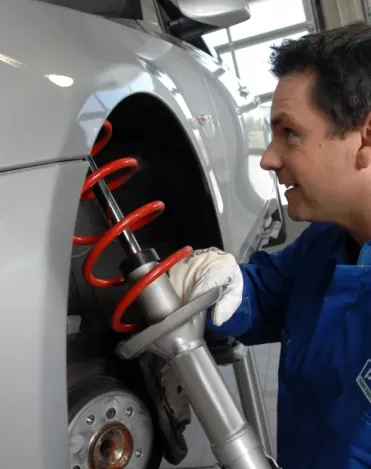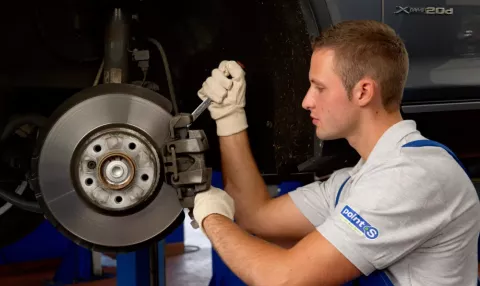Understanding Shocks and Struts: Your Guide to Safer Driving
Discover the critical role of shocks and struts in your vehicle's performance and safety. In this guide, you'll learn about their function, from ensuring optimal road handling to absorbing and dampening shock impulses.

What Shocks and Struts Do
Shocks absorbers and struts are essential components of your vehicle's suspension system. They play a crucial role in improving steering and handling by keeping your tires firmly on the road and controlling suspension movement.
Why They Matter for Safety
Shocks and struts are your safety heroes on the road. They help you stop safely, especially in sudden braking situations, by keeping your tires firmly planted. Additionally, they contribute to stability and steady handling during turns and sudden maneuvers, reducing body roll and lean.
Signs of Worn Shocks and Struts
As shocks and struts age, they can stop working as effectively, affecting how your car feels on the road. Signs of worn shocks include increased steering wander, reduced tire contact with the road, and a less stable driving experience.
Safety Facts
Worn shocks can make your car harder to control and increase stopping distance. A vehicle with worn shocks may lose stability and go off course earlier around turns. Worn shock absorbers or struts can cause your tires to wear out faster.
Benefits of Replacement
- Safer Steering: New shocks and struts can help restore like-new steering precision and
control in passenger vehicles. - Improved Stopping: They can enhance the effectiveness of your brakes and tires in a full
range of stopping situations. - Greater Stability: New shocks and struts can keep your vehicle more firmly planted on the
driving surface and in its lane while cornering. - A Safer and More Enjoyable Ride
Replacing your shocks and struts can make it easier to control your vehicle, increase your comfort, and make driving enjoyable again.


